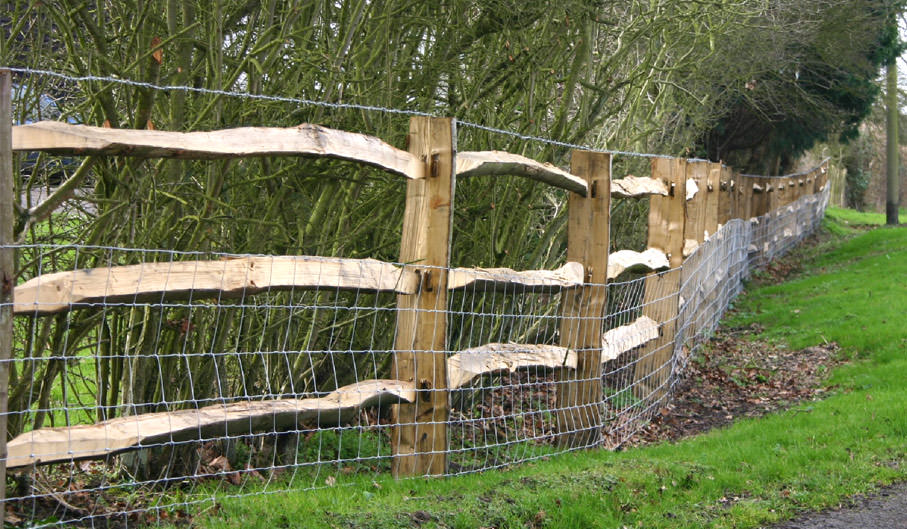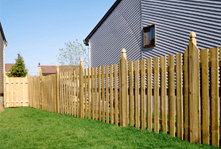7 Hidden Benefits of Hiring Professional Fence Contractors You May Not Have Considered
7 Hidden Benefits of Hiring Professional Fence Contractors You May Not Have Considered
Blog Article
A Comprehensive Overview to Fence Install: What You Required to Learn About Fence Provider
When it involves setting up a fencing, you've obtained a great deal to contemplate. From picking the best products to comprehending local guidelines, each step can really feel overwhelming. You'll need to assess your property and determine if you want to deal with the setup yourself or work with a specialist. That's just the beginning. Allow's check out the vital elements that can make or damage your fencing job.
Understanding Different Sorts Of Secure Fencing Products
When you're selecting a fence, recognizing the different types of fence materials is necessary. Steel fence, like functioned iron or light weight aluminum, uses toughness and sophistication but might require rust protection. Inevitably, selecting the best product will help you create a fencing that fulfills your requirements and enhances your home's worth.
Analyzing Your Residential Property and Fencing Demands
Before you start your fencing installation, it's necessary to analyze your building limits and the purpose of your fencing. Comprehending local laws and permits will certainly also assist you avoid any type of lawful problems down the line. By thinking about these factors, you'll guarantee your fence meets both your needs and area requirements.
Residential Or Commercial Property Limits and Lines
Understanding your residential property boundaries is vital for a successful fencing installation, as it not only aids you establish where your fencing will certainly go however also guarantees you're respecting your next-door neighbors' space. Begin by assessing your residential or commercial property act or study, which commonly outlines the precise limits. You could additionally wish to consult with an expert surveyor if you're uncertain.
Keep in mind, neighborhood zoning laws might determine fencing placement and elevation, so inspect those regulations also. Taking these steps assurances your fence is properly placed and certified, making the entire process smoother for you.
Objective of Secure Fencing
Third, secure fencing can specify your property limits, making it clear where your room ends and your next-door neighbor's starts. A well-placed fencing can aid manage sound from nearby roadways or next-door neighbors and also keep pets and youngsters secure. By reviewing your details demands, you can choose the best kind of secure fencing to achieve these advantages effectively.

Local Regulations and Permits
Just how can you ensure your fencing installment follows local policies? Start by talking to your regional zoning workplace or metropolitan web site. Fence Contractors. They frequently have standards regarding fence height, products, and placement. You'll also wish to learn if you require a license before starting your task. Some locations require authorizations for any new fencing, while others might only need them for taller frameworks.
Furthermore, take into consideration property lines and any kind of easements on your land. Marking your limits can protect against disputes with next-door neighbors or possible lawful issues. By comprehending these laws upfront, you can stay clear of pricey errors and establish your fence is developed to last, boosting both your residential or commercial property's worth and your tranquility of mind.
Local Laws and Permits for Fencing
Prior to you begin your secure fencing job, it is essential to examine neighborhood regulations and get any type of required licenses. Each city or region has its very own policies pertaining to fencing elevation, products, and positioning. These regulations guarantee that your fence abides by safety standards and community visual appeals.
You might need to submit a fencing plan, describing dimensions and products. Some areas might also call for a survey to confirm residential or commercial property limits.
Disregarding to comply with these regulations can cause fines or compelled elimination of your fencing, losing both time and money. So, put in the time to study and secure the proper authorizations for a smooth installation procedure. This step is vital in making certain your task aligns with regional laws and area standards.
Selecting Between Do It Yourself Installment and Professional Services
Are you thinking about whether to tackle the fencing installment yourself or work with a professional? This decision rests on several variables. Examine your ability degree. If you're useful and have experience with similar tasks, DIY could save you cash. Be truthful about your capacities; mistakes can lead to added expenses and headaches.
Next, consider the time dedication. Installing a fence takes some time, and if you're handling a hectic routine, employing a professional can guarantee it obtains done effectively. Furthermore, believe regarding the intricacy of the task. If your yard has anonymous challenging terrain or specific design requirements, professionals bring expertise that can make a distinction.
Finally, consider local guidelines. A specialist recognizes the licenses and codes required, aiding you avoid possible penalties. Ultimately, evaluate your skills, time, complexity, and guidelines to make the best selection for your secure fencing job.
Step-by-Step Guide to Fencing Installation
As soon as you've made a decision to move on with your fencing setup, following an organized step-by-step approach will certainly guarantee a smooth process. Start by marking the fence line with stakes and string to envision the design. Next, examine regional laws to confirm conformity with elevation and building lines.
Dig blog post holes at the very least 2 feet deep, spaced according to your fencing type-- typically 6 to 8 feet apart. Insert the articles into the holes and fill them with concrete for stability. When the articles are established, attach the straight rails or panels, seeing to it they're degree.
Secure the panels or pickets, validating they straighten appropriately. If you're utilizing entrances, mount them last, ensuring they swing openly. Check for any loosened connections and make required changes. Your fence must currently be ready to improve your home and give the privacy or safety you require!
Maintenance Tips for Longevity of Your Fencing
To keep your fencing looking fantastic and long lasting much longer, routine upkeep is vital. You need to set up a cleaning schedule, inspect for any type of damage, and apply protective finishings as required. By remaining proactive with these tasks, you'll assure your fence remains sturdy and eye-catching for several years to find.
Routine Cleaning Schedule
While it could be easy to neglect, establishing a regular cleansing timetable is important for maintaining the longevity of your fencing. Beginning by rinsing your fence with water a minimum of once every period to eliminate dirt and debris. For wooden fencings, make use of a gentle soap service and a soft brush to scrub away any mold or mildew. Don't forget to inspect for any type of rust on steel fencings; a wire brush can aid eliminate it, complied with by a layer of rust-resistant paint. If you stay in an area with heavy pollen or dirt, you may intend to enhance your cleansing regularity. Maintaining your fencing clean not only enhances its appearance but also expands its life, saving you money over time.
Examine for Damage
Consistently checking your fencing for damage is vital if you wish to maintain its stability and longevity. Beginning by walking around your fencing to try to find noticeable signs of wear, such as fractures, loosened boards, that site or rust. Pay special focus to the base and posts, where wetness can create significant problems. If you notice any type of damages, bear in mind and figure out the necessity of repair services. Attending to small issues promptly can stop them from rising right into larger, much more costly problems. Look for any kind of indications of bugs, like termites or woodpeckers, that might compromise your fencing's structure. Ultimately, verify that your fencing continues to be stable by checking for any kind of leaning or sagging sections. Routine examinations will keep your fencing looking great and working effectively for several years ahead.
Apply Protective Coatings
After inspecting your fencing for damage, using protective layers is a vital action in guaranteeing its long life. Depending upon the product, you'll intend to select the ideal type of finish. For wood fences, a high-quality sealant or timber tarnish can stop wetness absorption and discourage pests. view website If your fencing is plastic or metal, consider a UV-protective spray or paint to stop fading and corrosion.
Ensure to cleanse the surface thoroughly prior to application, as dirt and grime can threaten the covering's efficiency. Use the finish in dry climate for much better adhesion, and do not forget to adhere to the producer's directions for the very best outcomes. Consistently reapply every few years to maintain your fence looking excellent and standing strong against the components.
Cost Factors To Consider and Budgeting for Your Fencing Job
When planning your fencing task, comprehending price considerations is necessary to staying within budget plan. Beginning by figuring out the sort of material you want, as prices can differ considerably in between timber, vinyl, and steel. Don't fail to remember to variable in labor expenses-- employing professionals might save you time however can raise your general costs.
Following, gauge your building to determine the straight video required, as this straight influences product costs. In addition, consider any kind of permits you may require, which can contribute to your budget plan.

Finally, it's an excellent concept to reserve a contingency fund for unanticipated expenditures. By intending very carefully and taking into consideration these aspects, you can produce a reasonable budget plan that satisfies your fencing needs without breaking the financial institution.
Frequently Asked Questions
How much time Does the Typical Fencing Setup Take?
The average fencing installment generally takes one to three days, relying on the fence kind and dimension of your backyard. You'll need to consider any type of hold-ups due to weather or permit needs too.
What Should I Do if My Fence Is Harmed?
If your fencing is damaged, initially evaluate the level of the damages. Repair minor problems yourself, however, for significant problems, think about contacting an expert. Do not wait too long; it'll assist protect against additionally problems.
Can I Mount a Fencing on a Slope?
Yes, you can mount a fencing on an incline. You'll require to change your setup method, either by tipping the panels down or utilizing a racked design to ensure security and proper alignment with the terrain.
What Are the Finest Practices for Fence Paint?
To paint your fencing effectively, begin with appropriate cleansing and sanding. Usage high-grade paint and use in even strokes. Don't fail to remember to pick the best weather for paint, ensuring it's dry and mild.
How Commonly Should I Evaluate My Fencing?
You ought to check your fencing at the very least two times a year, concentrating on signs of damage, rot, or corrosion. Regular checks aid you capture problems early, guaranteeing your fence continues to be durable and aesthetically attractive longer.
Report this page